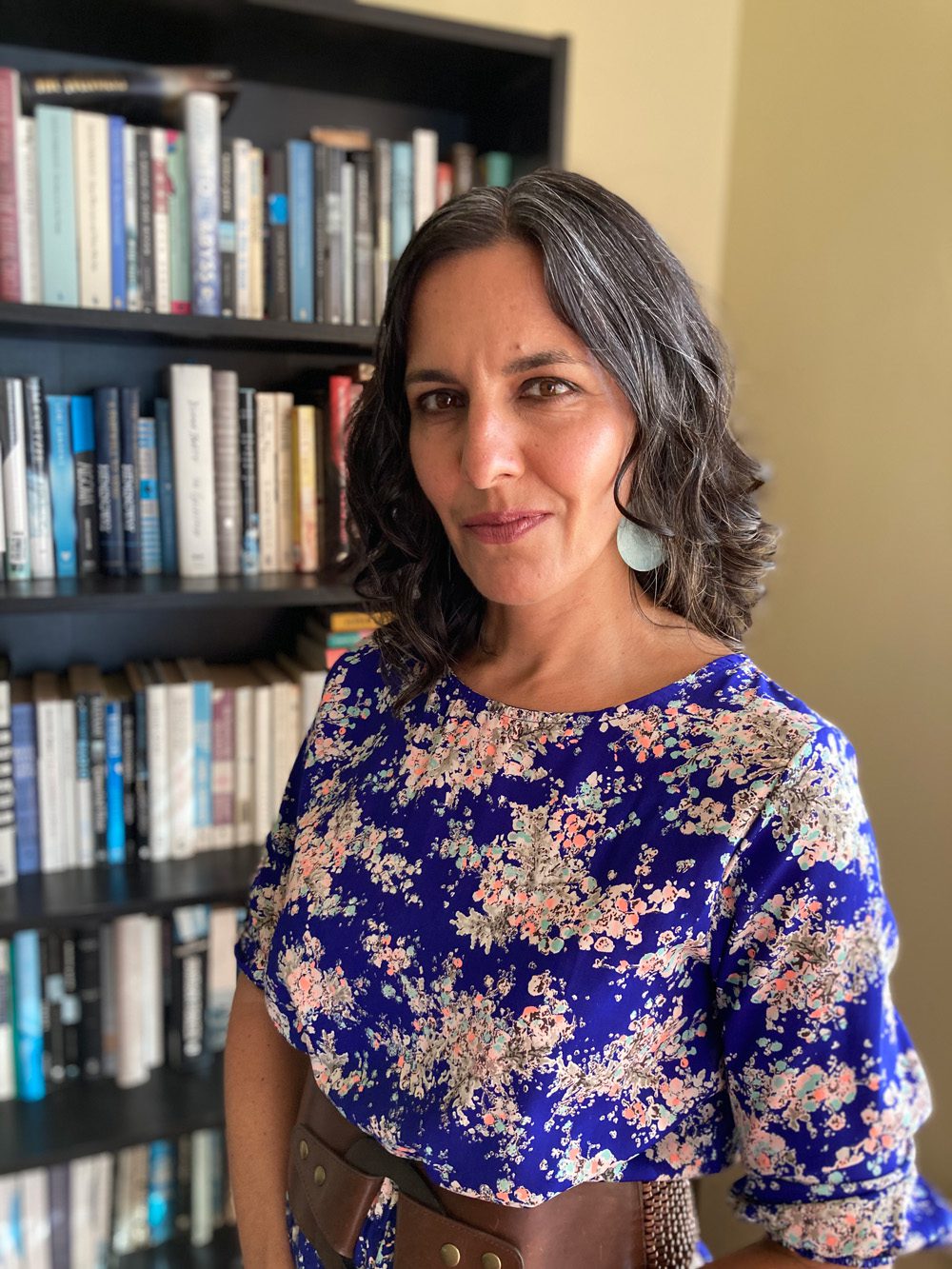Acclaimed author Charlotte Gill (HBA ’96 Innis) mines her mixed-race heritage to pen a personal story of belonging and identity
I am a teacher and bestselling author of Eating Dirt: Deep Forests, Big Timber, and Life with the Tree-Planting Tribe, and Ladykiller, a collection of short fiction. My latest book, Almost Brown, will be published in 2023. I was born a twin in London, UK, to an English mother and Sikh father. I live on the Sunshine Coast of British Columbia where you’ll often find me on the ocean, in the mountains, or on the forest trails.
Charlotte Gill
 In your about-to-be-published memoir, Almost Brown, you tell your story of growing up mixed race. What prompted you to write this book now?
In your about-to-be-published memoir, Almost Brown, you tell your story of growing up mixed race. What prompted you to write this book now?
This next book is about my brilliantly mixed international family. The story has always been turning around in my brain; I think this is pretty common for writers whose subjects are childhood and home. As a reader, I’ve always been hungry for books that show the bittersweet tragicomedy of intercultural family life, which is just as funny as it is painful at times, as well as the second-generation immigrant-kid
experience, which shares so many of those juxtapositions. These days, there’s an emerging space for writers to cover the subjects of ethnicity and identity in ways that perhaps weren’t as available in the past, and that’s a great chance for a lot of people.
I’ve been really interested in the broader existential questions that arise from the experience of racial inbetweenness. What does it mean to be a “person of colour,” and where does that compartment cleave to whiteness when so many of us are “both-and?” Race is all about the classification of human beings, and although it’s a sociohistorical fiction at heart, this phenomenon still has the power to govern much of what happens to us in our childhoods, our families, and our professional and economic lives. At least in my experience, mixedness is stirred into so many levels of being and consciousness, it becomes hard to tell where it seeps into belonging, identity, and even emotion—states of being we typically define as strictly personal. I was so curious about how these larger historical and political forces had shaped the little history of the Gill clan, with all its rifts and scandals, in ways we, perhaps, hadn’t realized or had the words to describe at the time. I think it probably took a number of years of hindsight and writerly experience to connect the tiny lived moments with those much larger forces in the world.
Besides being a bestselling, award-winning author, you are the Rogers Communications Chair in Literary Journalism at the Banff Centre for the Arts and Creativity, and on faculty in the MFA program in creative nonfiction at the University of King’s College. As a mentor and teacher, what is your best advice for emerging Canadian writers?
I don’t really think of myself as a teacher but more like a kind of accompanist. I work with writers at every level, from seasoned journalists to absolute beginners, and I’ve learned we come to the writing desk with a lot of ideas—about what is a worthy subject, about what is good writing. Most writers I know have a style all their own that exists on Day One; it’s just a question of uncovering it. Writing is all about the application of technique, but it’s also a subtractive process of clearing out preconceived notional clutter. It’s about seeing the world in one’s own special way. I read a lot of people’s work when it’s just them and me and the pages in between, and when it’s great, it often sounds like the unadorned voice of the writer, no more and no less, and all the places they’ve come from.
(Photo of Charlotte Gill, above, by Kevin Turpin)
This story originally appeared in the 2021/22 Innis Alumni & Friends magazine.